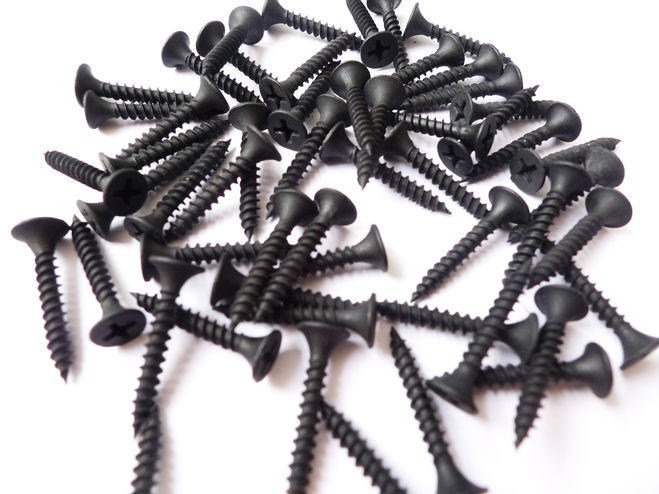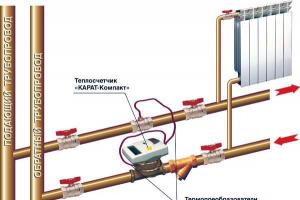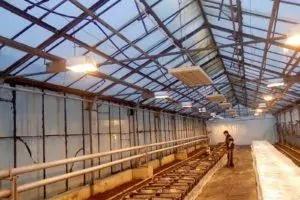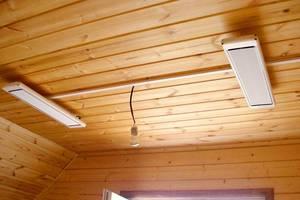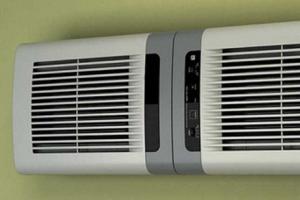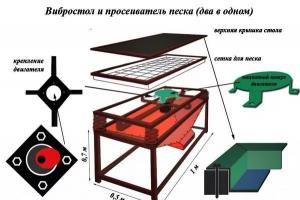Reliability and aesthetics complex structures made of wood largely depends on the right choice way to connect it components. This is especially true for frame products, load-bearing structures, where safety parameters come to the fore.
High-quality connection of wooden parts is the key to durability, the basis for an attractive appearance of the product, an indicator of the skill and professionalism of the carpenter and joiner.
Selecting the type of connection
In general, there are a huge number of types of joints of wooden blanks, so we can only talk about some of them, the most common.
One of the most simple ways to build up a wooden part (timber, log, board), to increase its width is end connection. There are several options for its implementation. A simple and functional half-thickness (half-tree) method is often used. Depending on the expected load on the part, the cut can be straight or oblique. In some cases, the joint is strengthened using figured cutouts - locks. This type of connection prevents stretching, twisting, and bending. This is how the beams are spliced together for the purpose of lengthening.
Creating volumetric frames or wooden frames requires reliable connections under different angles. In this case, it is rational to use a tenon-groove or tenon-eye connection. The nodes at the junction of parts can withstand displacement, bending and compression loads. If the structure requires high tensile strength, the cutouts are made trapezoidal.
Additional connections of frame products, which impart rigidity to the structure, are implemented using T-shaped or cross-shaped connections. The main load at the joints is compression, displacement and rupture. IN special cases the structure is additionally reinforced with metal corners, screws or nails.
To connect boards together into box-shaped structures at right angles, it is convenient to use a special box groove. As the name implies, this method is often used to create three-dimensional structures, including furniture boxes. A high-quality box joint looks monolithic, has an attractive appearance and can withstand impressive loads. While creating wooden furniture the connection is often used on dowels, dowels and dominoes (when the groove has an oblong shape, as opposed to a round dowel).
Tenon joint (tenon and groove)
The simplest and one of the most reliable is the tongue-and-groove connection. It is widely used in carpentry. In a similar way collected into a single whole wooden parts window frames, they produce the most various parts cabinet furniture, plywood sheets. The essence of this method is that a tenon is made at the end of one part to be connected, which is inserted into the groove of the other part and fixed in it.
For work it is convenient to use a special lamellar router; in the absence of one, you can get by with a simple hand tools. You will need:
- hand saw with fine teeth;
- electric or hand drill;
- several chisels of different widths;
- sandpaper;
- measuring tool, square and pencil.
First, the blanks are marked. The parameters of the tenon and groove depend on the parameters of the wooden parts and the configuration of the product, however, it is worth considering several general recommendations.
Important! The thickness of the tenon should be approximately a third of the thickness of the part, the width should be 70-80% of the width, the length should be equal to the thickness of the workpiece being joined.
The groove parameters must also meet these criteria. In any case, it is important to ensure that the dimensions of the tenon and groove match. The parts should connect easily, without pressure, but not fall out under their own weight. There should be no backlash, cracks or distortion.
The groove is cut out first, this sequence is due to the fact that the tenon is much easier to fit into the groove than vice versa. Cuts are made using a saw, excess wood is removed using a drill, the bottom of the groove and the walls are leveled with chisels.
In most cases, only wood glue is enough to fix the parts; screws or nails will help ensure maximum strength.
Half-tree connection
Quite often used in carpentry various options half-wood joints (simple or straight lock). This type of assembly wooden structures characterized by ease of manufacture and high reliability. The following varieties are distinguished:
- cross connection;
- half-tree - dovetail;
- gusset;
- on the mustache;
- half-tree splicing.
The first two methods are used to connect parts that intersect at right angles. Especially popular is the dovetail, in which the neckline is trapezoidal and the sides are not at right angles. The lock groove widens slightly from the end, providing a more reliable fixation. It should be noted that finger joint can also be called a dovetail if the spikes are cut in the form of trapezoids.
The second and third methods form a completed angle. Splicing is used if it is necessary to increase the length of the workpiece.
How to make a cross connection
One of the simplest is the cross connection. It is easy to manufacture; even a novice carpenter can master its intricacies. The work is performed in the following order:
- markings are made. The parts to be connected are placed on top of each other. Using a ruler, draw a cutting line. Thickness markings are applied using a thickness gauge;
- the first part is clamped in a vice. Hand saw, carefully, a cut is made along the lines to the mark left by the thicknesser. The workpiece rotates. A second cut is made;
- the workpiece is removed from the vice. Using a sharp chisel and a wooden mallet, remove part of the wood between the cuts;
- the second part is processed;
- The planes are leveled using sandpaper or an abrasive stone.
Now you can join wooden blanks. The connection must be tight, without backlash or gaps. If the product is one-piece, the joints are coated with wood glue, and the structure is additionally reinforced with screws.
Forming miter angles
One of the best ways creating corners of various volumetric products is a miter joint. It allows you to create a monolithic structure, hide the fibers of the end, thereby providing an attractive appearance. This method is suitable for a wide variety of products, but is most often used for the manufacture of frames and cabinet furniture parts.
To create a joint, cuts are made in each of the wooden parts at an angle equal to half the angle at which the workpieces meet. Most often, this angle is right, therefore, cuts are made at 45 degrees, however, the angle can vary widely. The work is performed according to the following algorithm.
First, mark out the details. It is important not to forget that the markings are made along the long side, otherwise you may not guess with the dimensions.
On the edges that will be connected, draw a line at the required angle. Using a combination square, the markings are transferred to each side of the workpiece. Then the cut is made, for which it is better to use an electric miter saw, but you can also work with a hand tool. When working with a hacksaw, it is important to control the cutting angle; it would be useful to use a block as a guide.
The finished parts are placed next to each other, checking the accuracy of the fit. Irregularities will have to be smoothed out with a hand plane, bring the angle using sandpaper. Wood glue is applied to both surfaces, and the product is fixed using clamps. Additional strength can be achieved using nails. When working with a hammer, it is important to control the impact force so that the workpieces do not move.
Particularly critical connections are reinforced with bars that are glued into the inner corner. A joint that will not be visible can be additionally reinforced with a metal square.
The result of quality work will be a perfect seam. If a small gap has formed, it can be hidden by straightening the adjacent wood fibers using a smooth cylindrical surface. The shaft of a regular screwdriver is suitable for this.
Spike in eye
Angle and T-joints (example: T-joint window frame) intersections are conveniently performed using the tongue-to-ridge method. In this case, the eye is made at the end of the vertical part, and the cuts for the tenon are made in its horizontal component.
The work begins with marking the eyelet. The thickness of the workpiece is divided by three. With a thin hacksaw, cuts are made to a depth equal to the width of the other workpiece. Excess wood is removed using chisels, and the walls of the eye are smoothed with sandpaper.
Mark the second workpiece. The width of the tenon should be equal to the width of the first workpiece, the thickness should be equal to the thickness of the tenon. The cuts are made hand hacksaw, carefully control the depth and angle of inclination. Remove excess with a chisel.
The final adjustment of thickness is carried out using sandpaper. The parts should connect with light force and not fall apart under their own weight.
Thorn in socket
A more complex connection is the tenon-to-socket method. It requires more skill, but is much more reliable and durable. The scope of use is the same as in the previous case, namely T-shaped joints. The difference between this method is that the tenon is made at the end of the vertical part, and a socket is cut out in the body of the horizontal part.
This is one of the most common furniture connections. There are connections with a through tenon and with a blind one. The difference is that in the first case a through socket is cut out, in the second the slot is made to a certain depth.
Features of Japanese joinery
Japanese masters have reached unprecedented heights of carpentry art. Using traditional techniques, combining Various types connections, they create precise and reliable joints without the use of nails or other fasteners. The joining of various wooden parts is carried out solely due to the force of friction.
The reliability of these connections is based on precise cutting. The perfectly matched locking lines on both mating parts allow you to create a connection with impeccable precision. Complex lock configurations require a lot of experience, knowledge and ability to use the tool, but if you want, all this can be learned.
Placing the boards together
High-quality wood is expensive, and it is not always possible to buy a good board with the necessary parameters, and it is not always necessary. To make, for example, a tabletop, it is not at all necessary to look for a table-wide board; with carpentry skills, you can create an ideal wooden sheet with the necessary parameters.
There are many options for bonding. A board with a tongue and groove, the so-called lining, is widely used. It allows you to create smooth wooden surfaces large area. A simplified version of it is often used - a board with a quarter joint.
Joining on a smooth fugue (butt)
The simplest way that does not require additional elements. The side edges of the boards are jointed; it is better to do this in pairs, clamping both adjacent boards in a vice and processing them at the same time. This treatment will create a precise surface on which the unevenness of one board will be compensated by the unevenness of the other. Both boards are coated with glue and fixed until it hardens completely.
Bonding load-bearing elements
There are several ways to lengthen (build up) a board that is part of the supporting structure. The simplest and most reliable is a half-timber connection followed by overlaying reinforcing strips at the junction. Non-critical areas can be reinforced with plywood.
The same method is also used to join boards at different angles. Precisely made cuts of the jointed parts make it possible to do without reinforcing linings; it is enough to secure the boards at the joint with screws.
Cutting without residue means that the stacked logs will form an even angle, their ends will not protrude beyond the building; a separate type of it is a warm angle. Cutting with the remainder, in turn, means that a weave of protruding ends will be formed at the corners of the building. The second method is more expensive in terms of the amount of material, but the building retains heat better and is more stable.
There are various ways to connect wooden parts; the ability to determine the optimal one for a particular type of work will significantly diversify the range of products that a craftsman can make. The right method will provide an attractive appearance product and guarantees the reliability of the three-dimensional structure.
They say about the coolest joiners and carpenters that they are able to build a house without single nail. Japanese artisans, even amateurs, are one of those.
Several years ago, a young automotive industry worker, passionate about woodworking, came across a book describing traditional Japanese woodworking techniques. He was very fascinated by the descriptions of connecting parts without using nails, screws or glue. He wanted to learn how to do the same. But there were no diagrams for making fasteners in the book. Then the guy decided to draw them himself.
He used the free Fusion-360 service to model and animate parts. The Japanese translated the resulting result into gifs and posted it on a Twitter account called The Joinery. In almost a year, the young carpenter visualized 85 in various ways detachable connections.

The variety of mounts is truly amazing. With their help, you can make basically anything - a stool, a sofa, a table, and so on. The main thing is to have straight hands and a good, preferably electric, tool.
But even if manual labor you're not at all inspired, you'll probably enjoy watching GIFs. The grace with which the details fit together is mesmerizing.

Making tight joints from wood
Professional marking with precision tools
Tight joints of wood products start with neat and precise markings. This is especially important if you are making joints by hand and the marking lines serve as tool guides. The accuracy of machining depends on the careful adjustment of stops, stops, overhang and inclination of saw blades and cutters. Here are the steps to help you achieve great results. This does not require unique equipment, but you should choose tools that ensure accuracy and efficiency. Also, develop the habit of following following rules when measuring and marking.
- Use precision instruments. For example, if possible, try to use a precision steel ruler instead of a flexible tape measure in most cases. Nice tools They are more expensive, but they will last you a lifetime.
- Consistency is the key to success. Use the same measuring tools throughout your project to avoid small inaccuracies affecting the quality of your connections. For example, the 300mm marks on two rulers may not match.
- The main thing is the result, not the measurements. In most cases, measurements should be avoided when a finished part with connection elements can be used to mark an adjacent part. For example, having made spikes on the front wall of the box, use them to mark “ dovetails» on the side wall blanks.
- Apply the right techniques markings and the right tools. With good marking and measuring tools, it is easier to achieve the required accuracy.
|
It is not always possible to accurately align the end of the ruler with the end of the workpiece, so in such a situation it is better, as they say, to sacrifice zero. Align the next serial division with the end and mark the size according to it. |
To draw a thin line parallel to the edge of the workpiece, use a thicknesser. Shows the outline of the socket on the post after determining the position of the end of the crossbar |

A sharp knife leaves the finest line, ensuring high marking accuracy. In some cases, the recessed line also becomes the starting position for the chisel
Fine-tuning of machines for precise machining of parts
Machines and power tools will only provide excellent results if they are properly set up and adjusted. This page shows the main features of setting up three machines that are the main ones for most workshops: saw and planer machines, as well as milling table. As you prepare them for work, remember the following rules.
- First of all, make the pieces of the same thickness. Start any project by cutting all pieces to the same thickness. Any differences in thickness make it difficult to obtain neat joints and require additional adjustment by sanding and scraping.
- A smart approach. Long boards are inconvenient to process, so it is better to immediately cut them into blanks with a small allowance, which are easier to handle, achieving the required accuracy.
- Double check the dimensions. The actual thickness of the slabs and sheet materials, as a rule, differs from the nominal value, so a caliper should be used to measure them. Only after this cut out the grooves, tongues and folds of the appropriate width.
Before sawing anything, check that the blade is parallel to the grooves in the table, adjust the crosscut (miter) stop to an angle of 90°, and then install longitudinal stop parallel to the disk. At longitudinal sawing Use a clamping comb to hold the workpiece tightly against the rip fence.

Align the back table with the highest point of the cutting edge path of the knives, as shown in the illustration to the right. Then use a proven square to ensure that the rip fence is positioned exactly at right angles to the back table. To achieve excellent results, always press the workpiece against the fence when planing. Slowly feed the board onto the rotating cutter head. When the front end of the board passes over the blades, move the pressure point forward so that the board is pressed against the back table. For getting good result adjust the back table and longitudinal fence.
Plan to complete most of your routing work in multiple passes, setting the fence to the final height or width for the last pass. Fix the position of the router after each change in the offset of the cutter. When removing grooves, tongues, folds and other joint elements, use clamps like the clamp comb shown here. It’s not difficult to make yourself, it doesn’t require a lot of material.

Final fit guarantees success
Regardless of how many joints you need to make on the machine, always make test runs and sample joints using scraps after each setting change. Adjustments should be continued until the test connection is tightly assembled, and only then can you begin processing the project details. But despite all your efforts, sometimes you can find imperfections in the connections. Sawdust on the saw table or unnoticeable warping of a previously planed piece can ruin the work and make assembly impossible. If the part is too thick or wide, resist the temptation to use machines to adjust the size. Precise fitting is best left to hand tools.
- Small zenzubel. With its help, it is possible to quickly remove a layer with a thickness of 0.5 mm or more from a wide spike or ridge. A zenzubel with a small angle of inclination of the piece is especially effective when working across the grain. The cutting edge protruding from the side allows you to process the inner corner close to the shoulder of the tenon.
- Rasp or file. A flat, coarsely cut rasp removes material quickly, but leaves a rougher surface than a plane. A flat file works slower, but it is good for smoothing the surface.
- Sandpaper. If you only need to remove a small amount of material from a tenon or other wide surface, apply a piece of 100-grit sandpaper to a suitable scrap board or block of cork. Use self-adhesive sandpaper or stick a regular one using spray adhesive or double-sided tape. This method allows you to process only one plane without affecting adjacent ones, as happens if you simply wrap a block with sandpaper.
- Chisel. Blades of different widths will allow you to remove material from any hard to reach places. When stripping flat surface Hold the chisel with the bevel facing up, pressing its flat front edge against the wood.

When using a rasp, chisel or any other tool to remove material, take your time and regularly check the result by connecting the parts.
Plan your assembly sequence carefully
You have carefully cut out all the parts, achieved tightness in all joints and are now ready to start assembling. But before you open the glue bottle, be sure to do a dry assembly test (without glue). When assembling the product, determine in what order it is best to connect the parts, how many clamps will be needed to tightly compress all the joints, and how best to place the clamps so that there are no distortions.
It is better to divide the assembly of large and complex projects into several simple steps, instead of fussing around trying to glue all the pieces together in one go. For example, when making a cabinet with paneled sides, first assemble the frames with panels, and then proceed with the main assembly. This approach gives you more time to check all connections and requires fewer clamps. Another way to gain time is to use glue with an extended setting time. For example, regular yellow Titebond glue allows you to complete the entire assembly in 15 minutes, and the Titebond Extend variety allows you to level the glue within 25 minutes.
When installing clamps, make sure that their pressure is applied to the middle of the connection. An incorrectly installed clamp can deform the parts so that a gap forms between them. Sometimes, despite all efforts, the connections do not turn out neat. An accidentally slipped tool, inattention, or undetected sawdust near the stop lead to a loose connection or a noticeable gap in it.

Assemble the cabinet in stages, first gluing together the small side panel frames. Then you can pay more attention to each connection. Then start assembling the case
How can you salvage a seemingly damaged work?
The gap can be sealed with a mixture of quick-setting epoxy glue and dust from sanding the same wood (the mixture should have the consistency of a thick paste). It is better to use epoxy glue instead of PVA, since the putty inevitably spreads over the surfaces adjacent to the joint and the epoxy glue hardens without being absorbed into the wood. Excess of this composition can be easily removed by sanding to avoid problems when applying the finish. Use this filling method when the appearance of the joint comes first, not its strength.

If, during trial assembly, the tenon dangles in the socket, such a connection will not be strong. Filling the gaps with glue will not do any good, so take the time to reinforce the too thin part with wood. Saw out two overlays so that the tenon is slightly thicker than required, and glue them on both sides. After drying, adjust the tenon again to the size of the socket.

Turn a disadvantage into an advantage
Sometimes it is better not to hide traces of repair, but to make them visible. In a too narrow ash tenon, we made two cuts and inserted thin cherry wedges into them, which tightly pressed the narrow cheeks of the tenon to the edges of the nest. In other cases, such as when joining with a hidden tenon, small chamfers or roundings along the edges of the hanger will make the loose joint less noticeable.

Replace part
This can happen to any of us. Some errors do not make sense to correct for two reasons: (1) if, regardless of your skill and diligence, the unsightly defect will remain noticeable or (2) if it is faster and easier to make a new part to replace the damaged one.
If you take a closer look at massive antique furniture or doors, you will notice a beautiful and uniform texture: the product seems to be cut from one big piece tree. Only upon closer inspection can one identify the individual planks that make up the overall surface.
Previously, furniture was not made from thick boards, as is done today. The carpenters were just more skilled. From many thin planks they could make a large panel with a perfectly smooth surface. Although it is known that a tree lives its contented, vibrant life, even when it is no longer connected to the ground by its roots. It is exposed to temperature and humidity, as well as mechanical stress, as a result of which it can suddenly reveal its “character”.
The technique of joining planks so that they remain even and smooth for a long time is called lengthwise butt jointing.
You need to carefully examine each plank and compare its texture with the texture of neighboring parts: the wood fibers of each part should run in the opposite direction compared to the fibers of neighboring planks. So one board “locks” the other.
The nature of the texture depends on which part of the trunk the board is cut from - from the middle or outermost part. The boards can be laid out in different ways: in one case, so that the surface appears to be a cut of one trunk, in another, by mixing the boards, you can create an unusual pattern.
But in any case, when adjusting, the boards should be positioned opposite each other so that a wavy pattern is obtained. Therefore, achieving the “whole tree” effect and at the same time “locking” the tree is very difficult. After all, one can see alternately the front (facing the core of the tree) and the back (facing the bark) side of the boards.
In order for the boards to fit snugly together along the length, the edges must be absolutely straight. You need to vertically fix the board between two guide boards and process the surface with a plane. Treat the wood immediately, without delay - if the air humidity changes, it may become deformed again.
Previously, a carpenter's skill was judged by a tabletop assembled from boards. The ability to join boards end-to-end along the length can still be useful today. We will show and tell you how this is done.

Marking and gluing
How to correctly connect boards along the length with an insert strip
The plank strengthens the connection along the entire length, performing two functions: it doubles the area of the joining areas covered with glue, since it penetrates into both boards, which gives additional strength to the connection, and due to the opposite direction of the fibers in the plank in relation to the fibers in the main parts the connection is more resistant to stress.
Using plywood
For a strip that must be very thin, the most suitable material- plywood. If, for example, you take a plank made of solid wood, then the arrangement of fibers in the plank and boards will be parallel. In this case, high strength of the connection will be achieved, but the plank itself will not withstand the load and will break if the boards begin to sag. You can use a strip with a transverse grain direction. It can withstand the load when the boards bend and gives greater strength to the connection, but such planks are limited in length and are extremely unreliable under longitudinal loads. Multi-layer plywood compensates for the shortcomings of solid wood planks, providing strength to the joint.
An alternative to the rail is inserted tenons, which are placed with glue on them at a distance of 10-20 cm from each other. First, a hole for the tenons is drilled in one board, then the location of the tenons on the other board is marked with special markers.

The left bar is longer, the middle one is thicker than necessary, the right one is made correctly. It should be shorter than the overall height of the grooves to leave room for glue.

Blind connection using a strip of multi-layer plywood. The plank is completely hidden, and the boards at the ends maintain their integrity.
The rafter system is the most complex and one of the most important elements of the house; the comfort and operating time of the building largely depend on the correctness of its construction. Calculation and design rafter system should only be done experienced builders or engineers with special training.
Designing a wooden rafter system is much more difficult than any metal constructions. Why? In nature, there are no two boards with absolutely identical strength indicators; this parameter is influenced by many factors.



The metal has the same properties, which depend only on the grade of steel. The calculations will be accurate, the error will be minimal. With wood everything is much more complicated. In order to minimize the risk of system destruction, it is necessary to provide a large safety margin. Most decisions are made directly by the builders on site after assessing the condition of the lumber and taking into account the design features. Practical experience is very important.

Why do you need to splice rafters?
There are several reasons why rafters need to be spliced.
- Roof length exceeds standard lumber length. The standard length of the boards does not exceed six meters. If the slope has big sizes, then the boards will have to be lengthened.
- During construction there is a lot left good boards 3–4 m long. To reduce the estimated cost of the building and reduce the amount of unproductive waste, these pieces can be used to make rafters, having previously spliced them together.

Important. It must be remembered that the strength of spliced rafters is always lower than that of whole rafters. You should try to ensure that the splice point is located as close as possible to the vertical stops.
Splicing methods
There are several ways to splice, there is definitely no better or worse. Craftsmen make decisions taking into account their skills and the specific location of the joint.
Table. Methods of splicing rafters.
| Splicing method | Brief description of the technology |
|---|---|
| It is used on boards with a thickness of at least 35 mm. Quite a complex method, it requires practical experience performing carpentry work. In terms of strength, the connection is the weakest of all existing ones. The advantage is saving lumber. In practice, it is used very rarely on construction sites. |
| The length of the rafter legs is increased with the help of an overlay. The cover can be wooden or metal. If the length of two sections of boards is not sufficient according to the parameters of the rafter system, then this method allows you to increase them. Butt joints have the highest bending strength and are widely used during the construction of various structures. |
| Overlapping. Two boards are fixed with an overlap. The simplest method is in the middle in terms of strength. Disadvantage - the total length of the two boards must be greater than the design length rafter leg. |

In this article we will look at the two simplest and most reliable splicing methods: butt and overlap. There is no point in touching the oblique cut; it is almost never used because large quantity shortcomings.
Requirements of building codes and regulations for splicing rafters
Inept splicing of rafters along the length can not only sharply reduce their resistance to bending loads, but also cause complete destruction of the structure. The consequences of this situation are very sad. Building regulations provide certain patterns when choosing the size of the fastener, its installation location and the length of the pads. The data is based on many years of practical experience.
Spliced rafters will be much stronger if metal pins, rather than nails, are used to connect them. The instructions will help you make your own connection calculations. The advantage of the method is its versatility; it can be used to solve problems not only with lengthening rafters, but also with building up other roof elements. Specialized companies performed rough calculations and collected the data in a table, but it indicates only the minimum acceptable parameters.

- Diameter and length of studs. In all cases, the diameter of the studs must be ≥ 8 mm. Thinner ones do not have sufficient strength and are not recommended to be used. Why? In metal connections, the diameter of the studs is calculated based on tensile forces. During contraction metal surfaces They are pressed so tightly together that they are held together by friction. In wooden structures, the pin works in bending. Individual boards cannot be pulled together with great force; the washers fall into the board. In addition, as the relative humidity changes, the thickness of the boards changes, thereby reducing the tightening force. Bending pins must be large. The specific diameter of the stud must be determined using the formula d w = 0.25×S, where S is the thickness of the board. For example, for a board 40 mm thick, the pin diameter should be 10 mm. Although this is all quite relative, you need to keep in mind the specific loads, and they depend on many factors.

- Board overlap length. This parameter should always be four times the width of the boards. If the rafter width is 30 cm, then the overlap length cannot be less than 1.2 m. We have already mentioned that specific solution accepted by the master taking into account the condition of the lumber, the angle of inclination of the rafters, the distance between them, weight roofing materials And climate zone building location. All these parameters have a great influence on the stability of the rafter system.

- Stud hole spacing. It is recommended to fix the fasteners at a distance of at least seven stud diameters; the distance from the edge of the board should be at least three diameters. These are minimum values; in practice, it is recommended to increase them. But it all depends on the width of the board. By increasing the distance from the edge, you cannot reduce the distance between the rows of studs too much.


- Number of tie rods. There are quite complex formulas, but in practice they are not used. Craftsmen install two rows of studs, taking into account the distance between them, the holes are arranged in a checkerboard pattern.

Practical advice. To increase the bending strength of the spliced rafters, the holes of the studs should not be located on the same line; they should be shifted by at least one diameter.
Butt splicing with boards
It is much more convenient to do the work on the ground; prepare a flat area. Place the bars on the ground - the rafters will have to be trimmed, you need clearance for circular saw. Before splicing, find out exactly the length of the rafters. You need to measure it on the building; use any thin long boards, rope or construction tape. If there is an error of a few centimeters, no problem. When connecting the rafter legs on the roof, this error is eliminated without problems.
Step 1. Place one board on the bars, cut the end exactly at a right angle. It is better to cut with a hand-held electric circular saw.
Important. Follow the safety rules, this is a high-speed and very dangerous tool. Never remove the saw's factory safety features or turn off the electrical overload relays.
Rafter boards are quite heavy; when cutting, position them so that they do not pinch the saw blade or break prematurely during cutting. Prepare the second board in the same way. Make sure that the cut is only at a right angle. The ends of the spliced boards should fit tightly against each other over the entire surface; this is necessary to increase the strength of the spliced rafters. The fact is that even if the connection of the studs is loosened, the ends during bending will rest against each other along the entire length of the cut and hold the load. Studs and overhead boards will only keep the structure from creeping along its length.
Step 2. Place two prepared rafter boards side by side. Prepare a board for the overlay. We have already mentioned that its length should be approximately four times the width of the board. If the roof slopes have a slight slope, the distance between the rafters is large, and the roof will be insulated mineral wool, then the bending loads increase significantly. Accordingly, the length of the board for splicing must be increased.
Step 3. Place the overlay on two adjacent boards for the joint. Quite often, the thickness and width of boards, even from the same batch, differ by several millimeters. If this is the case, then level the boards on the side to which the sheathing will be nailed.
Practical advice. The science of strength of materials says that the thinner the material, the greater its resistance to bending along a thin plane. This means that, for example, five boards placed next to each other on an edge, each 1 cm thick, can withstand a significantly greater load than one board 5 cm thick. Conclusion - for splicing it is not at all necessary to cut thick expensive materials; you can use several thin pieces required length. There are enough such pieces at any construction site.
Step 4. Drill holes for the studs in a checkerboard pattern and at standardized distances. To ensure that when drilling holes individual elements did not move, you need to temporarily fix them together. Use long and thin screws for these purposes; nailing is not recommended. They cut or tear the wood fibers, and the strength of the board is slightly reduced. Self-tapping screws do not cut the fibers, but push them apart; after unscrewing, the boards almost completely restore their original strength characteristics.
Step 5. Drill holes, do not place them on the same line, otherwise the boards may crack during use.
You may find recommendations to separate the boards after drilling the holes and lay jute between them to prevent the appearance of cold bridges. This is not only wasted work, but also harmful. Why? Firstly, no cold bridges arise at the splice points; on the contrary, they have the greatest thickness and, accordingly, the lowest thermal conductivity. But even if they appear, there will be no negative consequences; this is a roof truss system, and not an indoor window or door. Secondly, jute reduces the friction force between the splice elements, and this has a very negative effect on their strength. Thirdly, if condensation gets on the material, which is very likely, then it will take a very long time to remove moisture from it. There is no need to tell what consequences long-term contact of wooden structures with moisture leads to.
Step 6. Insert the studs into the prepared holes, put washers on both sides and tighten firmly with nuts. It is recommended to tighten until the washers are pressed into the wood. The excess length of the studs can be cut off using a cylindrical grinder with a metal disc.
All other rafters are spliced in the same way.
Overlapping splicing
This connection is easier to make, but under one condition - the total length of the two boards allows it; it must be greater than the length of the rafter leg by the amount of overlap.
If you have low quality lumber, then before starting work it is recommended to lay it out on flat surface and do an audit. For long sections of spliced rafters, choose straight ones, and for segments use curves. Although for the rafter system it is strongly recommended to buy only quality materials, this is not an architectural element of a building on which you can save.
Step 1. Select the boards and place them on top of the beams. If you wish, you can align the ends using circular saw, no desire - don’t match. The condition of the ends does not in any way affect the strength of the overlap splice.
Step 2. Lay the boards on top of each other, adjust the length of the joint and the overall size of the rafters.
Practical advice. The boards must lie strictly parallel to each other. Due to the fact that the upper one is raised above the lower one by the thickness of the material, stands made from pieces should be placed under it and the bars. The thickness of the segments should be equal to the thickness of the bottom board.
Step 3. Align the boards along one of the edges and temporarily fasten them with self-tapping screws. Drill holes, install studs, washers and tighten nuts.
Butt splicing with plywood
One of the methods of splicing rafters helps to save boards and rationally use waste of various lumber. In this case, cuttings of sheet plywood one centimeter thick are used.
Step 1. Lay the rafter boards evenly on the site, close the ends, pay attention to the parallelism of the side edges. The boards should be extremely equal in thickness, the ends should be cut exactly at right angles.
Step 2. Using a brush, generously coat the surface with PVA glue.
Step 3. Place the prepared piece of plywood at the joint and press it firmly with clamps. While fixing, make sure that the plywood does not move from its original location.
Step 4. Using long, strong self-tapping screws in a staggered pattern, screw the plywood to the boards. The length of the screws should be 1–2 times shorter than the total thickness of the boards and plywood; their ends cannot protrude from the reverse side. Be sure to place washers under the screws large diameter. Before tightening the screws, drill holes in the rafters. Their diameter should be 2–3 mm less than the diameter of the threaded part of the hardware.
Step 5. Turn the board over reverse side up, place the stands under the ends, they should not hang in the air. Carefully remove all installed clamps one by one.
Step 6. Apply glue to the surfaces and place a second piece of plywood on them. Clamp it again with clamps.
Step 7 Tighten the screws with great force.
Important. When tightening the screws, make sure that they are not positioned against each other. The displacement must be at least three centimeters.
Step 8 Remove the clamps. To strengthen the splice assembly, tighten it with through pins. They should be placed in the same way as with conventional butt splicing.
Practical advice. The holes for the studs should be 0.5–1.0 mm smaller than the diameter of the stud. There are times when it is impossible to accurately select the diameter of a drill bit for wood. Then it is recommended to use a drill of a slightly smaller diameter, let the pin go in with a fairly large force.
While she was being hammered away strong blows hammer, the first few turns of the thread are crushed, which makes screwing the nut very difficult. To avoid problems, tighten the nuts before driving in the stud; now let the thread on the end kink; it is no longer needed. Before installing the rafters in place, check that the glue is dry. In good weather, it takes about 24 hours for it to completely harden.
The final touch is applying glue
Important. If, when splicing the rafters along the length of the boards, the nuts were tightened until the washer was sunk into the wood, then this cannot be done with plywood. Carefully control the pressing force, do not damage the plywood veneer.
How to correctly hammer nails into rafters when splicing
It is not always possible and necessary to splice individual rafter elements using studs; sometimes it is easier to do this with ordinary smooth nails. But you need to be able to hammer them in correctly, otherwise over time the compression force of the boards will decrease significantly. The length of the nail should be 2.5–3 cm greater than the thickness of the rafter at the junction.
How to correctly drive nails to connect loaded or critical wooden structures?
Step 1. Drive the nail into the boards at a slight angle, but not all the way. It is necessary that the tip protrudes from the back side by about one centimeter.
Step 2. On the back side of the rafter, bend the nail at a right angle with a hammer.
Step 3. Hammer the nail about one more centimeter. Bend the end again, the bend angle should now be much less than 90°. The more you bend it, the more secure the final fixation will be.
Step 4. Now you can drive the nail head all the way in. On the reverse side, bend the protruding part until the sharp end is completely inserted into the board. Remember that the point where the body of the nail exits and the point where its tip is driven in should not lie on the same line.
This technology completely eliminates the independent weakening of the pressing force.
It has already been mentioned that the bending strength of the rafters at the splice is always less than that of the whole element. If possible try to place this node as close as possible to the ridge, Mauerlat or various spacers. Such precautions minimize the risks of mechanical destruction of the rafter leg. If this possibility is not available for one reason or another, then it is not recommended to place the stop under the splice at a distance of more than 15% of the leg length from either end.
Never use black self-tapping screws for connections.. This metal has two significant drawbacks. The first is that it quickly oxidizes and loses its original strength. Secondly, the manufacturing technology of such self-tapping screws involves hardening. Hardened self-tapping screws when exceeding permissible load do not stretch, but burst. During roof operation relative humidity wooden structures change, and the thickness of the boards fluctuates accordingly. And this can significantly increase the tensile force of the self-tapping screw; it will not withstand it and will crack.
Do not overdo it with the amount of hardware. If there are too many of them, then the holes will significantly reduce the strength of the parts being connected, as a result you will get the opposite effect, the build-up will not be strengthened, but weakened.
Video - Splicing rafters along the length













































